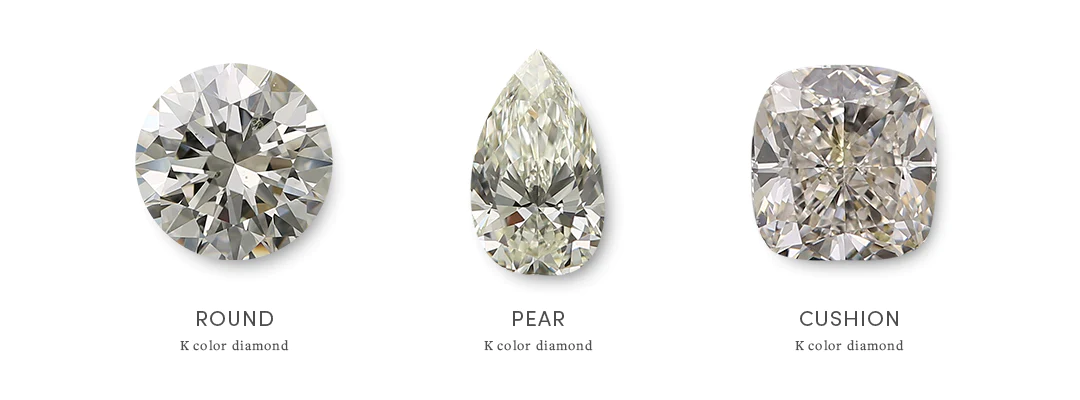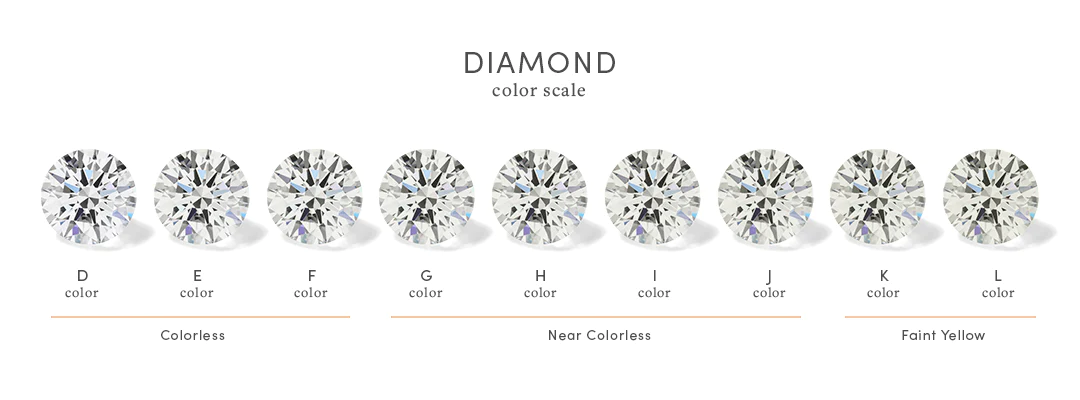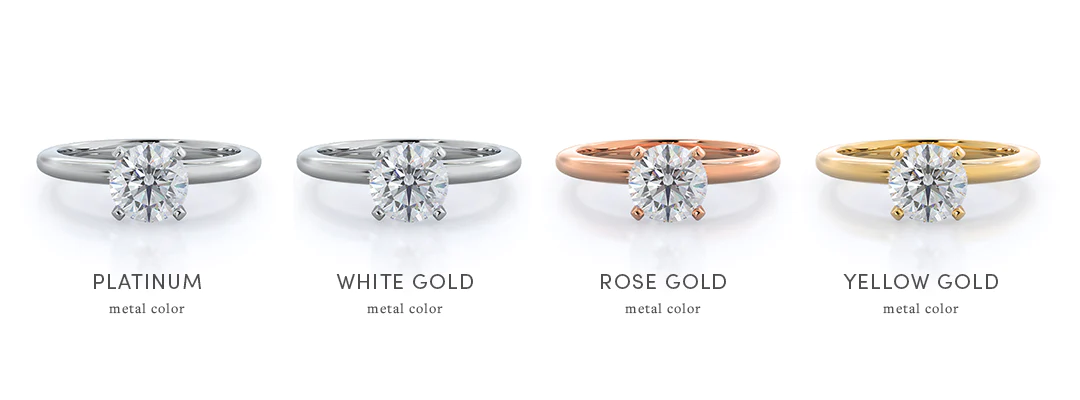Lab diamonds have many similarities to natural gems. The first common thread about both is how they are grown in extreme conditions. Natural diamonds withstand the earth’s crust, and lab diamonds are formed in high-pressure/high-temperature labs. They also share many properties – optical, physical and chemical composition, which makes it difficult to tell the two apart. We use the four C’s – color, cut, clarity, and carat to assess the quality of the diamond. For now, let’s focus on diamond color.
Understanding the Lab Diamond Color Grade and the IGI Scale
Both natural and laboratory grown diamonds come in many shapes, sizes, and colors. Traditional white diamonds (which are actually clear) are especially popular are also graded by its color, typically on a scale from D to Z. You can find these sparkly gems in necklaces, earrings, and rings (especially engagement rings).
The International Gemological Institute (IGI) was established in 1975 and now has headquarters all over the world. IGI independently verifies lab diamonds, grading them according to a number of factors e.g. cut, clarity, color, and carat. IGI certified diamonds using a graded color scale. The less color a diamond has the better the grading it will receive. Less color generally equals more sparkle! Color grading runs from D (colorless) to Z (a noticeably yellow or brown hue). Let’s explore the lab created diamond color chart and find out more about the grades:
Color Grades from D to Z:
Grade D
The highest color grade available. A ‘D’ grade color lab diamond is completely colorless. The diamond will not show signs of any color, even when examined via magnification.
Grade E & F
Almost as perfect as grade D diamonds, Grade E & F diamonds look colorless to the naked eye. Gemologists might be able to tell the difference between D, E, and F but the average jewelry buyer won’t be able to do that!
Grade G to J
To the naked eye these diamonds look relatively colorless (they don’t look all that different from Grade E and F diamonds), but they aren’t of the same high quality as F, E, and D grades. You will pay much less for a G color lab diamond, and the same applies to an H, I and J graded diamond.
Grade K to M
Grade K to M diamonds have a faint tint – you will see a pale-yellow hue if you look carefully. These diamonds are still pretty and have a warm tone, but are not considered as high quality. For that reason, at With Clarity, we only carry D-L colored lab diamonds because we want your pieces to shine and last as long as possible.

Grade N to R
These lower grade diamonds have a very light tint. Examine a diamond graded N to R and you will probably notice a yellow or brown hue. Again, you can expect to pay less for these gems.
Grade S to Z
The lowest grade diamonds (S to Z) have a light tint, so a brown or yellow shade will be evident. These diamonds are much cheaper to purchase.

Does fluorescence impact diamond color?
If you place your diamond under UV (ultraviolet) light, blacklight, or direct sunlight you might notice a glow coming from it. Fluorescence can result in the diamond adopting a slightly cloudy appearance.
Does the color grade affect the price?
There are a number of factors affecting the price of a diamond – color being one of those. Lab grown color comparison will help you to understand certified color grading. The shape and size of the gem will also play a part, along with the clarity and carat.
As previously mentioned, the higher the grade, the more you can expect to pay for the diamond. Grade D is the best you can buy, but E and F are also top-notch. If you opt for G to J grade you can still get a stunning diamond but it will cost you less. Try to view each diamond on its own merit. A grade G to J could have the good looks and sparkle you are looking for – so don’t get caught up on trying to spot a yellow hue – you might not even be able to see it without magnification! That said, if you’re a bit of a perfectionist you might want to pay a little more and go for a higher grade.
What about Accent Diamonds What color should I pick?
What are accent diamonds? Accent diamonds are smaller than center diamonds and are set in the ring to complement the star of the show. You should choose accent diamonds that complement the shape, size, and color of your center stone. Accent stones do not need to have a high color grade, as a general rule, look for accent gems that are one to three shades lower than your main diamond. A jeweler that is reputable and skilled will be adept at picking the accent diamonds that perfectly match your center diamond.
Fancy Lab Created Diamond Colors
If you like the idea of a diamond with a splash of color you will be pleased to discover there are different shades to choose from. Lab grown diamond color comparison allows us to understand the varying shades. Yellow lab diamonds are available in a number of hues (from pale yellow to vivid) and in different sizes and shapes. The yellow color comes from Nitrogen (this can be controlled in a lab environment to distinguish the shade of yellow desired). Lab diamonds can also be orange in color (from the solvents used in the growing process) or a shade of blue (from pale to intense) – caused by exposure to boron. Pink is another popular color choice (again you can opt for pale pink through to deep shade). Pink diamonds do not receive their color during the growing process, instead the pink is inserted via irradiation and annealing (a process that occurs once the diamonds are formed).

Does Lab Grown Diamond Color Grade Matter?
When it comes to carat weight
If what you are searching for is a larger diamond or a bigger carat size, then do not compromise on the color grade. The two most significant factors when choosing a diamond would be cut and color. These two aspects of a ring affect the look and beauty of a ring more than its clarity and carat. That being said, if you plan to purchase a lab diamond above 1 carat, a G or H color grade will minimize the appearance of yellow. If you are unsure about carat weight, the best choice is to pick a lab diamond with a color grade between G through J.
What About the Color of the Mounting?
Do not worry if your lab diamond color grade is not a D (colorless). Once a stone is set in a ring, the diamond color becomes more difficult to detect. That being said, the color of the mounting can emphasize a lab diamond’s color. White metal mountings make yellow tints more apparent, whereas yellow gold makes it less obvious. Rose gold is similar to a yellow gold metal effect but to a lesser degree. If you purchase a lab diamond with a color grade from K – Z, pick yellow gold or rose gold mountings to de-emphasize the yellow tint in the stone. The metal you choose for your ring also depends on you and/or your partner’s daily routine. All metals are not the same. Depending on your personal preferences, the metal you choose can vary in durability, shine, weight, and cost.

